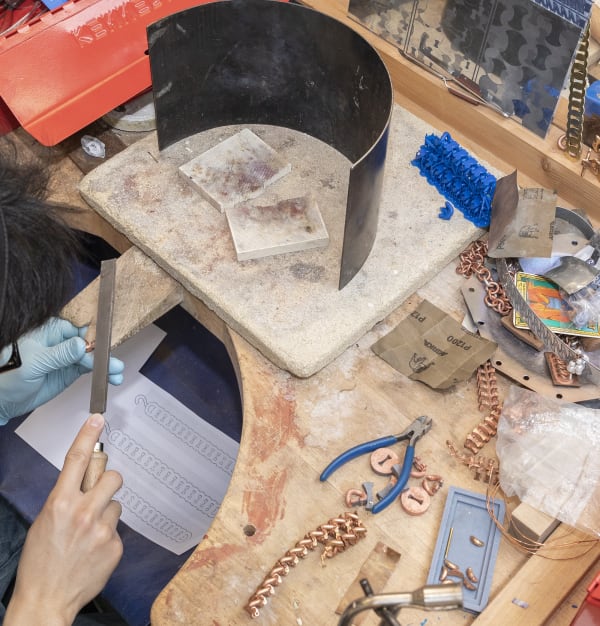
Having previously partnered with our BA Jewellery course for over 15 years, in 2019 Swarovski extended its partnership to include the entire Jewellery, Textiles and Materials Programme at Central Saint Martins. To kick off the new relationship the partners worked together on a project focused on nurturing the next generation of conscious designers who will contribute towards a more sustainable industry.
The new initiative formed part of the curriculum on MA Material Futures, BA Jewellery Design and BA Textile Design. Taking Swarovski upcycled crystal as a starting point, students across disciplines explored ways to embrace sustainable materials and concepts and produced designs and ideas that had a positive social impact and addressed real business challenges.
Students with winning designs explain more about the inspirations and concepts behind their work.
MA Material Futures
MA Material Futures students explored the power of light through the medium of Swarovski crystal. As future thinkers, these students developed innovations that harnessed the potential of light and could inform new technological or scientific processes.
Sean T. Ross, Solar Forge, winner
For my project, I decided to create something obscure and beautiful, an artefact made unique by its method of production. I designed my Solar Forge to use a combination of parabolic mirrors (made from small mirror backed crystals on satellite dishes) and a small glass Fresnel lens. The large, reflective satellite faces the sun directly and redirects as much sunlight as possible up into the second, smaller dish. This dish then reflects the light back, passing through the glass Fresnel lens. It is at this final focal point that the crucible will be held for the solar fusion to take place.
Solar Forge
Sean T. Ross, MA Material Futures
If my Solar Forge is unable to obtain the required temperature then I will attempt to fuse quartz (1,600 degrees Celsius) or igneous rock to create obsidian (900 degrees Celsius). As this method doesn’t require an enclosed space or heating elements, the process should be less vulnerable to impurities, possibly making superior stones. It also means I can add impurities of my own to create all-new combinations. An example of this could be melting different metals into liquid obsidian.
Riina Õun, Piezoelectric Pavement, runner up
Piezoelectricity is the electrical charge that accumulates in certain solid materials (such as crystals, certain ceramics, and biological matter like bone) in response to applied mechanical stress. The piezoelectric effect results from the linear electromechanical interaction between the mechanical and electrical states in crystalline materials with no inversion symmetry. Essentially, piezoelectricity is generated by everyday movements like the vibrations caused by footsteps - often it is not utilised and so goes to waste. For my project I investigated the generation of light through piezoelectricity.

Rochelle salt (Sodium Potassium Tartrate Tetrahydrate) was one of the first known materials found to exhibit piezoelectricity, so I selected this material to use in my experiments. I embedded the rochelle salt into my two-tier pavement slabs along with Swarovski upcycled crystals and LED lights. The crystals served to make the slabs attractive, diffusing and reflecting the light from the LEDs. Applying pressure to the top tier of the paving slab causes the LED lights, situated under the crystals, to light up.
Starting with the pavement leading to Swarovski Crystal World I would like to see the piezoelectric pavement making its way to the busy streets of large cities. It would offer an extra light source, a pleasant surprise and a beautiful, decorative design. In the future I see the environmentally sustainable piezoelectricity taking over busy streets of the megacities of the world.
BA Jewellery Design
BA Jewellery Design students created jewellery pieces that combined upcycled Swarovski crystals with other materials, in particular ‘future materials’ that could be zero waste, environmentally friendly or part of the circular economy.
Imogen Burch, Creating Clarity, winner
These rings are intended as tools for discussion. They are designed to shine a light on, and magnify, the issues of climate change. Upcycled Swarovski crystals are engraved with words provoking ideas around the conservation of our natural world and the current climate crisis.
The geometric experimental setting is inspired by architecture, mirrors and light refraction. I endeavour to create pieces of jewellery that will be passed down through generations, modified and updated through time. The component that will stay permanent is the crystal, and its message. A discreet word or phrase engraved onto the crystal allows the wearer to connect with their own personal reaffirming commitment to sustainability. These Swarovski crystals promote and encourage a sense of responsibility for the natural world.
A jeweller's loupe may be used to focus the eye and the mind, creating clarity and a commitment to the future. Upon closer inspection, Truth and Clarity.
Kirsten Schultze, Evergreen, runner up
My project is about the seeds of hope and optimism for a better world. I began by considering the environment and the fact that things currently look quite bleak - the polar ice caps are melting and climate change is disrupting earth's natural ecosystems.
However, although doomsday seems near, there are new movements rising up to make positive change. People are starting to fight for the environment. Like little seeds of hope in a dying tree, human nature – when truly inspired and driven for positive change – is a force to be reckoned with. Like the evergreen trees in a cold and dark winter, hope stands strong, tall and vibrantly green showing that life will find a way.
BA Textile Design
BA Textile Design students were challenged to develop new crystal applications in print and weave designs that celebrated cultural fusions in the city of London, working the concepts of sustainability and social purpose into their design story. Three winners and runners up were selected for this course, one for each of its pathways: knit, print and weave.
Millicent Sanders, Construction Rebellion, winner (knit)
The construction industry is one of the most polluting industries in the UK. The NBS (National Building Specification) website indicates that in 2014 the UK generated 202.8 million tonnes of waste, of which construction, demolition and excavation (CDE) was responsible for 59% (119.7 million tonnes). High visibility jackets specifically are not commonly repurposed as they are often branded with site specific logos - because of this they are sent to landfill. Reducing waste materials by volume while increasing their value was the main aim of my project, as well as highlighting the huge waste problem within the construction industry.
Millicent Sanders
Construction Rebellion
The main materials in my project – excluding upcycled crystals - have come from a CDE specific waste plant. All samples collectively have been made from 25 high visibility jackets, 15 meters of shrink wrap (non-recyclable plastic) and two black rubble sacks (non-recyclable plastic). After deconstructing the jackets, I printed them with heat transfer papers (to avoid waste waters and toxic inks) and cut them into lengths of yarn which I then stretched and knotted before use. The shrink wrap and rubble sacks were taken apart, cut into strips half an inch thick, twisted and pulled into yarn.
Hannah Livesey, This Little Light of Mine, winner (weave)
My project had several dimensions in terms of conscious design. My samples were made entirely from natural yarns - this means that they will biodegrade more easily than if I had combined them with synthetic fibres. I also created my own natural dyes from turmeric powder and blueberries to colour my weft yarns. It was also important to me to make sure the crystals were used consciously to shed natural light, and to reduce the reliance on electricity.
-
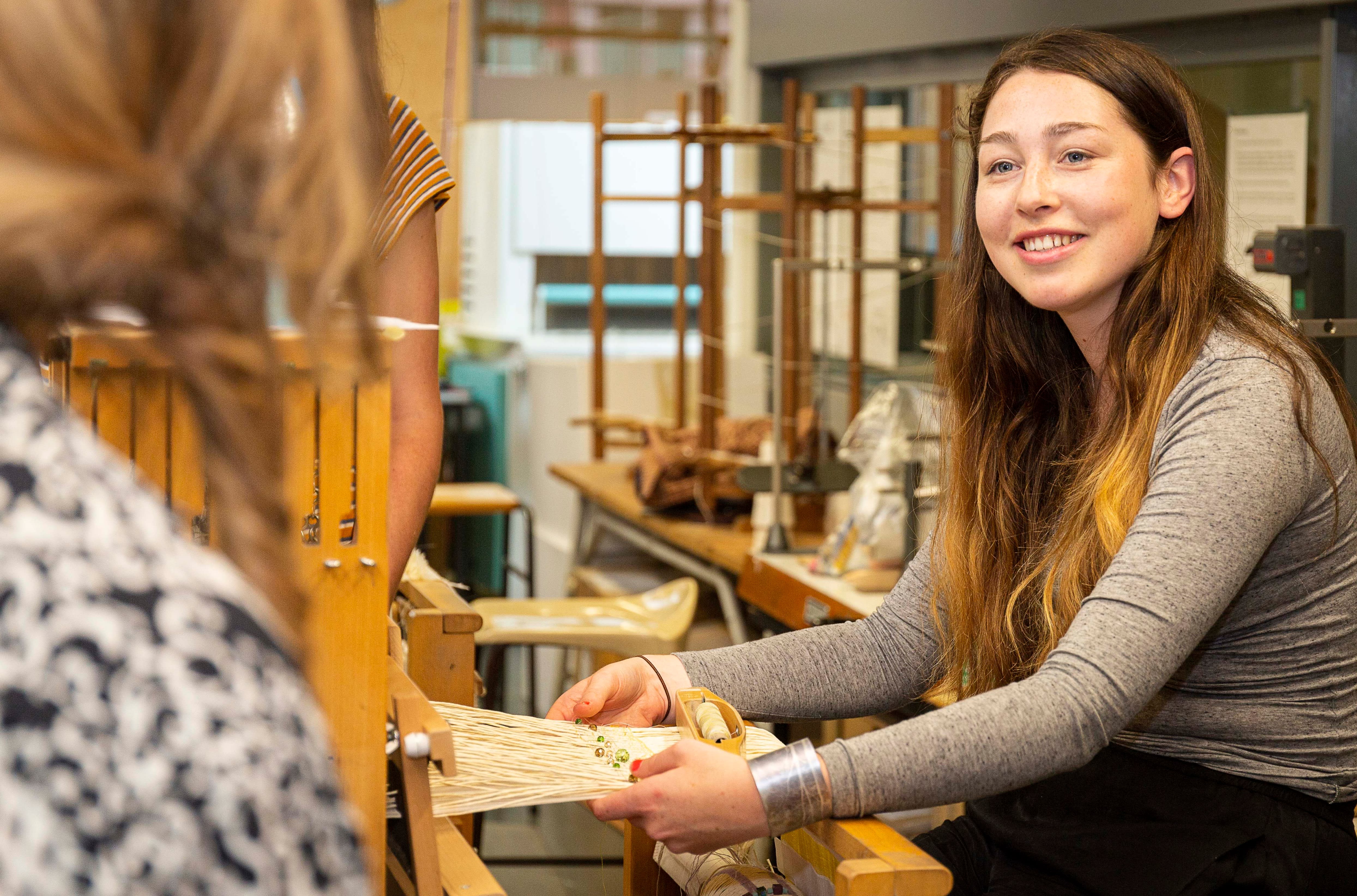
Image: Bruce Basudde
-
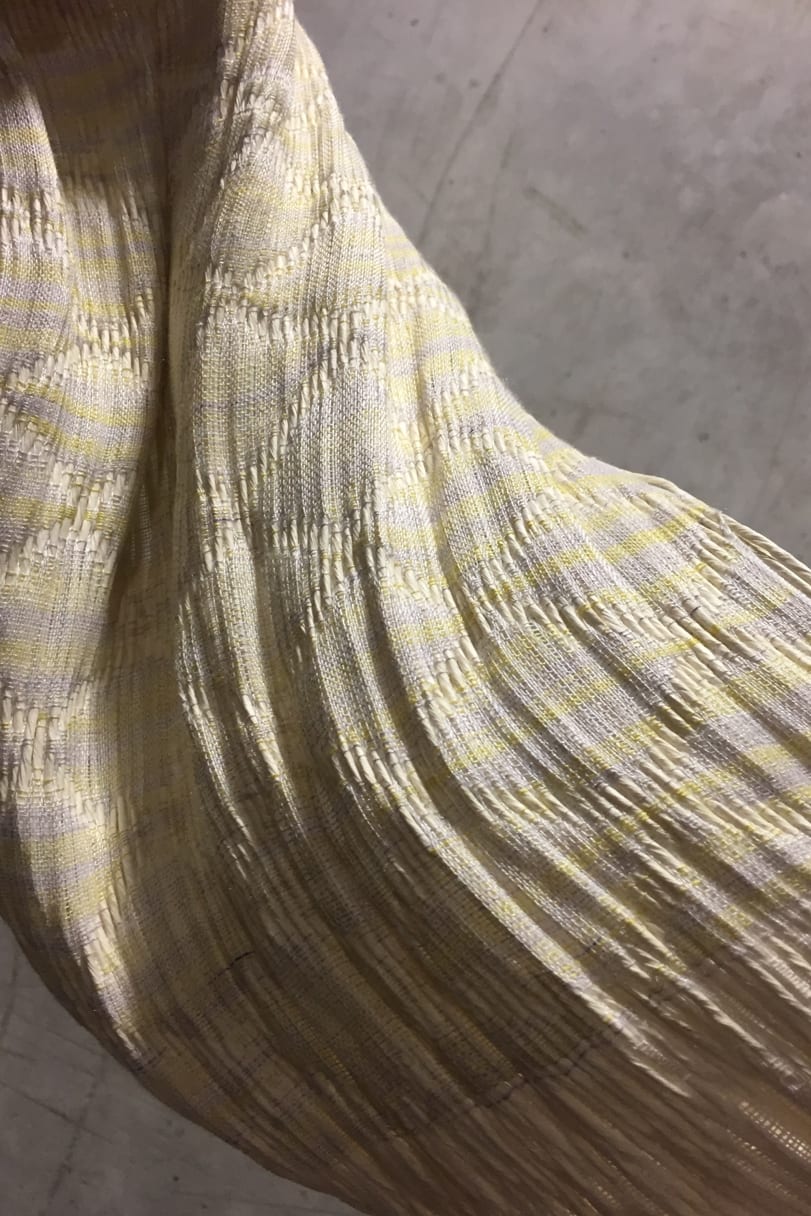
This Little Light of Mine, Hannah Livesey. Photo: Hannah Livesey
-
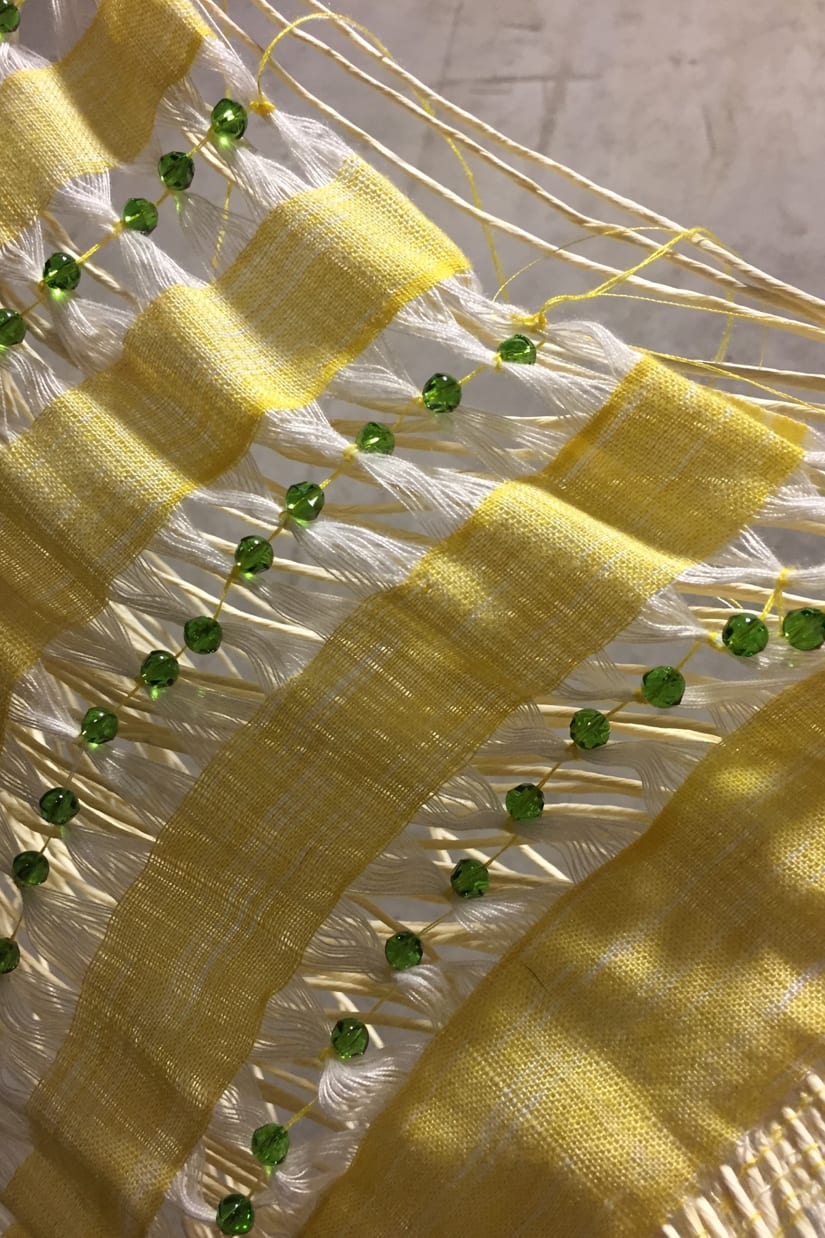
This Little Light of Mine, Hannah Livesey. Photo: Hannah Livesey
I think my weaves would work well in a commercial setting as lighting installations or perhaps as wall partitions. Commercial areas can feel rather sterile and uninspiring and I feel that my weaves could enhance this environment.
Sissell Gustavsen, Precious Fish, winner (print)
As global demand for seafood constantly increases fishing companies are continuously maximising their fishing activities - this is leading to a large-scale deterioration of fish populations. If this ever-increasing demand for seafood continues there will be little or no marine life left in the near future - seafood is something that we should eat in moderation and with respect as many species may not exist in the future. I aimed to tackle this important issue in my work.
I incorporated Swarovski upcycled crystals into my design to enhance the appealing features of the creatures in my prints, bringing them to life. The designs remind us that there are many beautiful lifeforms in our oceans that we should admire and protect.
-
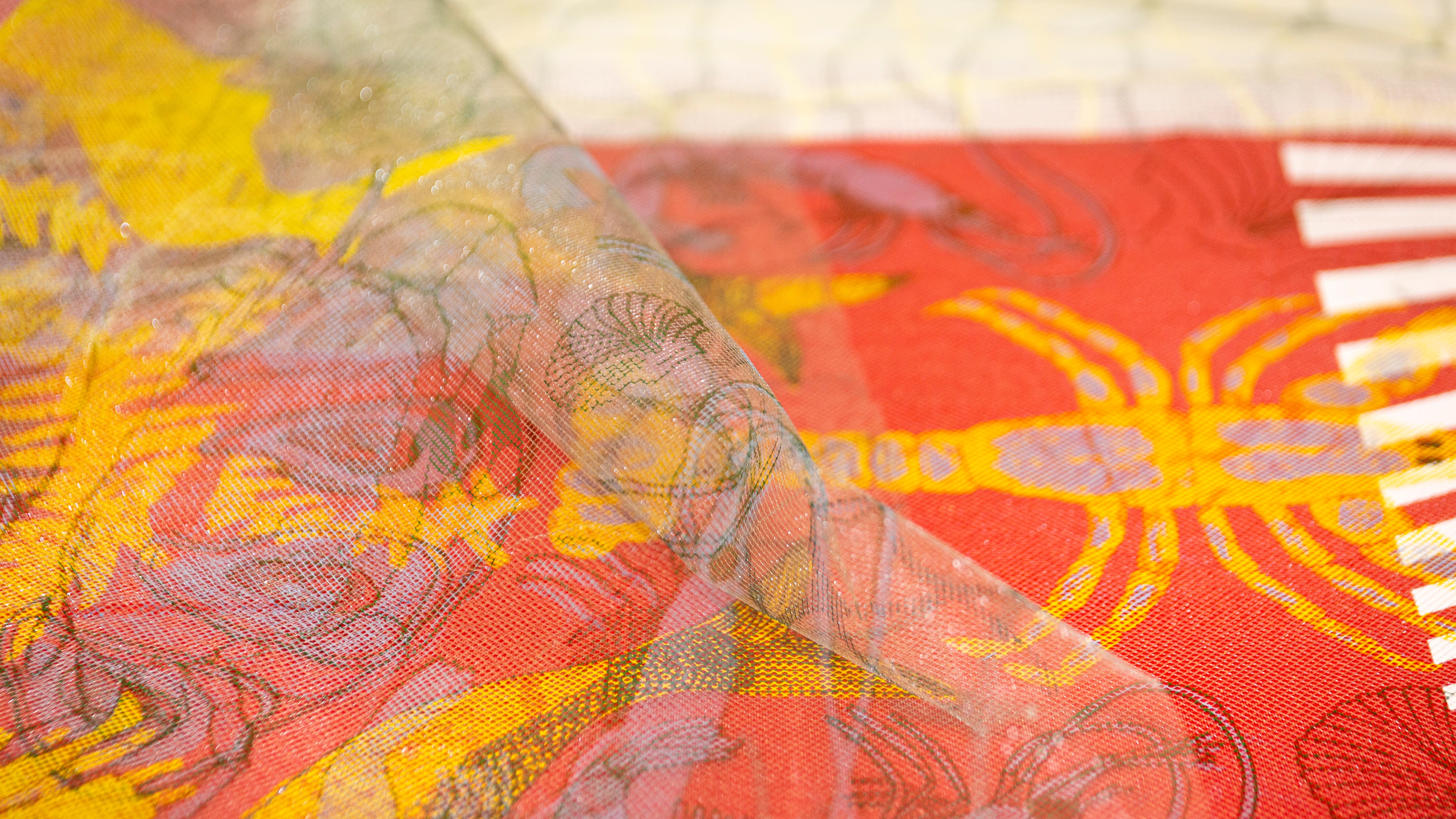
Precious Fish, Sissell Gustavsen (BA Textiles) Photo: Sissell Gustavsen
-
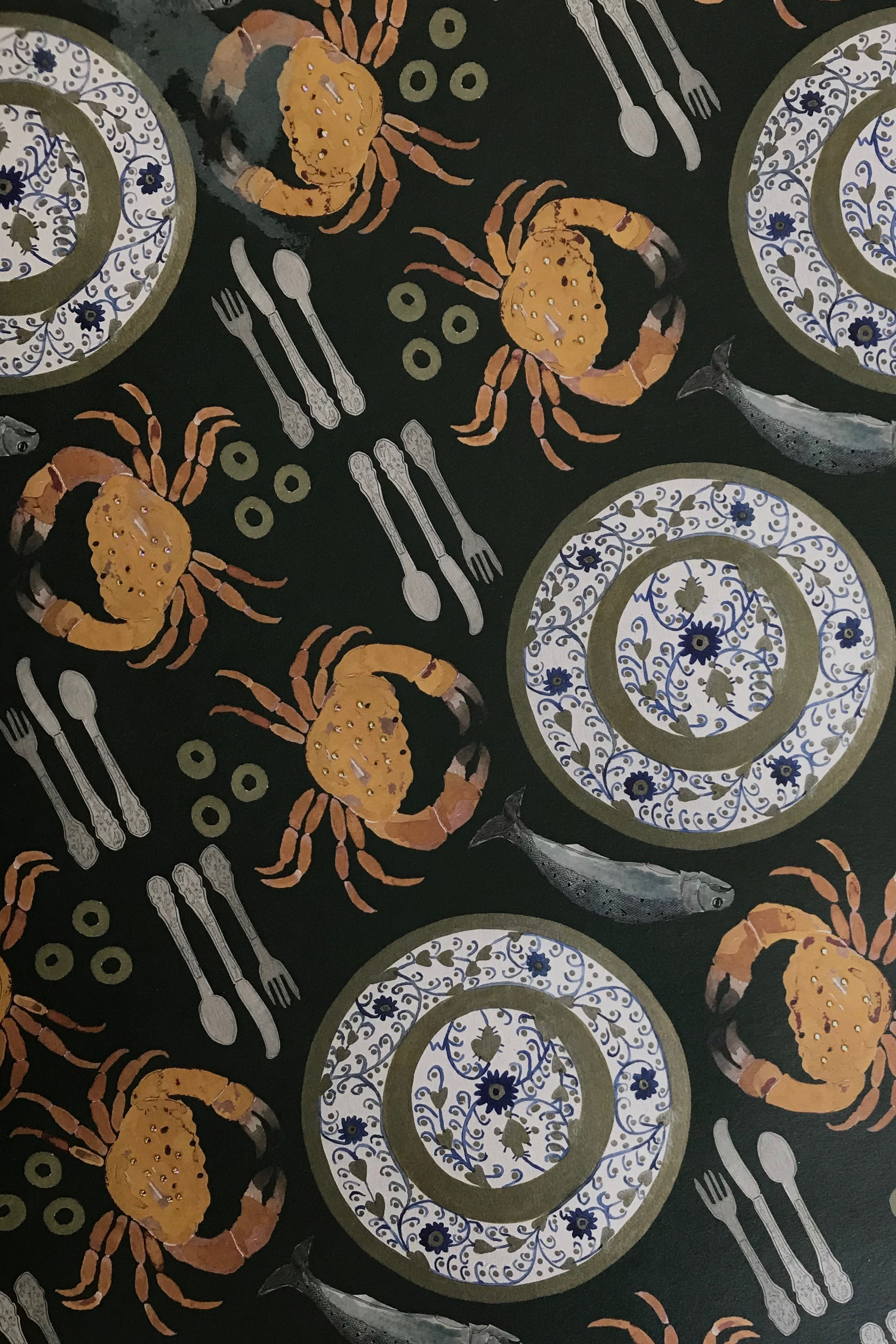
Precious Fish, Sissel Gustavsen (BA Textiles) Photo: Sissel Gustavsen
-
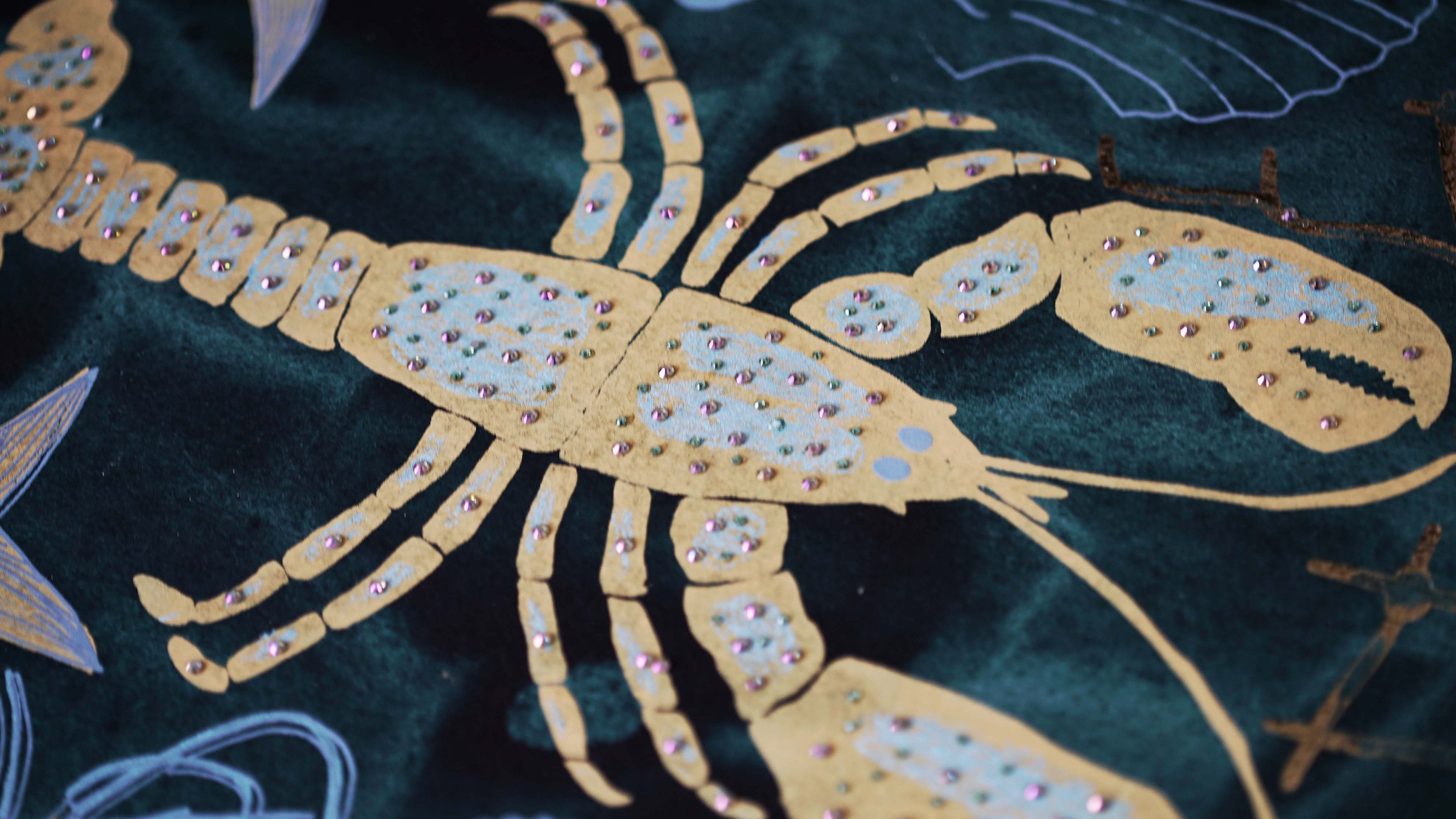
Precious Fish, Sissell Gustavsen (BA Textiles) Photo: Sissell Gustavsen
My design has been made for an interior setting - it is wallpaper with a repeated design that can be used for fish restaurants or home decoration. The wallpaper is designed to last for a long time meaning that it won't need to be replaced as often as cheaper disposable options. In this sense it is a 'conscious design'.
Christy Shum, Cultural Cuisines, winner (print)
Food bring families together but it can also break cultural barriers to create more diversity allowing us to establish new traditions that will be passed on to the next generation. Through this project, I hoped to explore the concept of future heirlooms by reiterating the importance of food in cultural heritage.
In Chinatown I noticed that lots of grocery shoppers were still using plastic bags which cause a lot of harm to the environment, so I decided to create bag and scarf designs that could be used as alternatives to these. Incorporating Swarovski crystals gave my designs a sense of luxury which, I think, would encourage the shopper to make use of the product for longer, thus reducing waste.
-
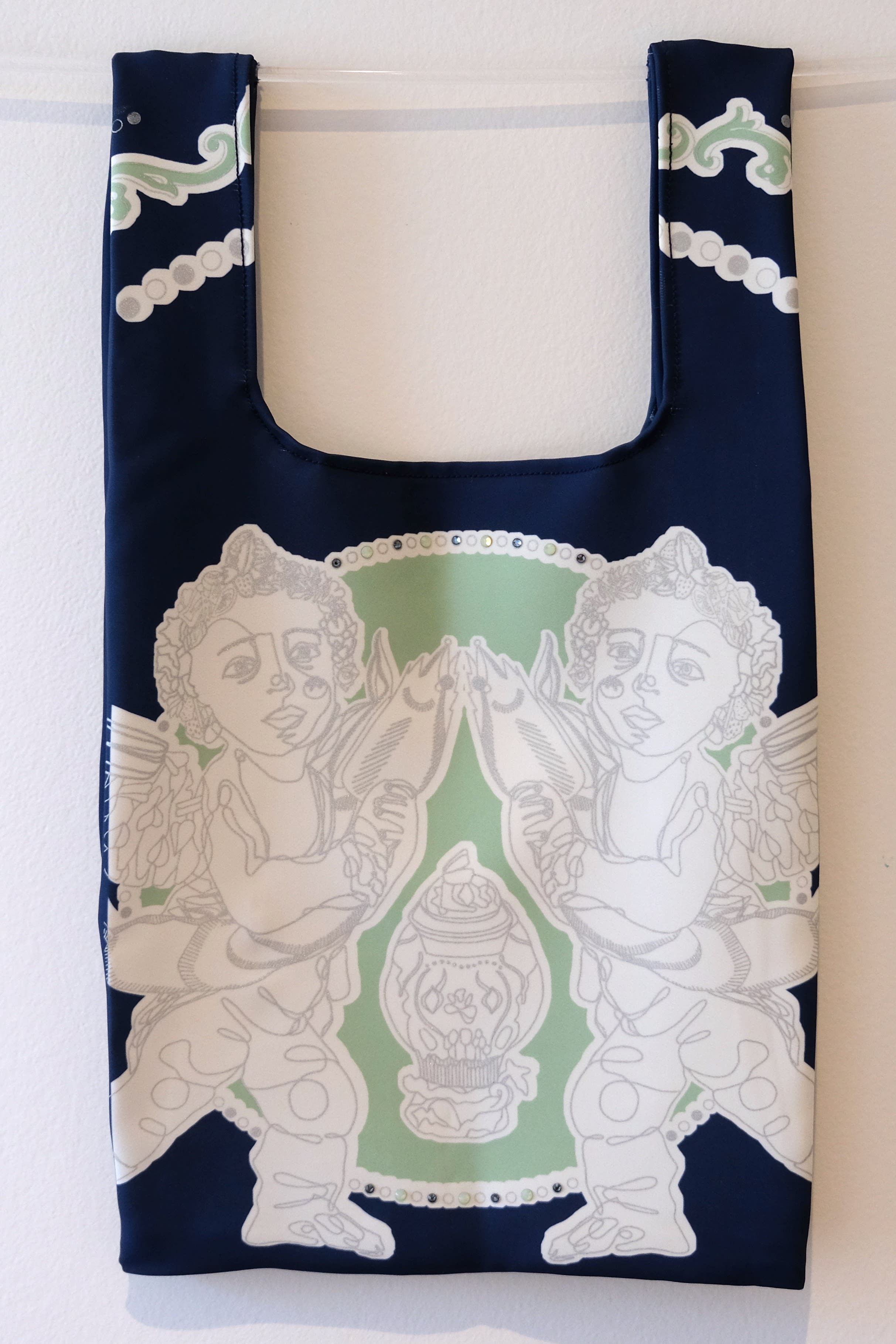
A bag design created by Christy Shum for her Cultural Cuisines project (BA Textiles) Photo: Christy Shum
-
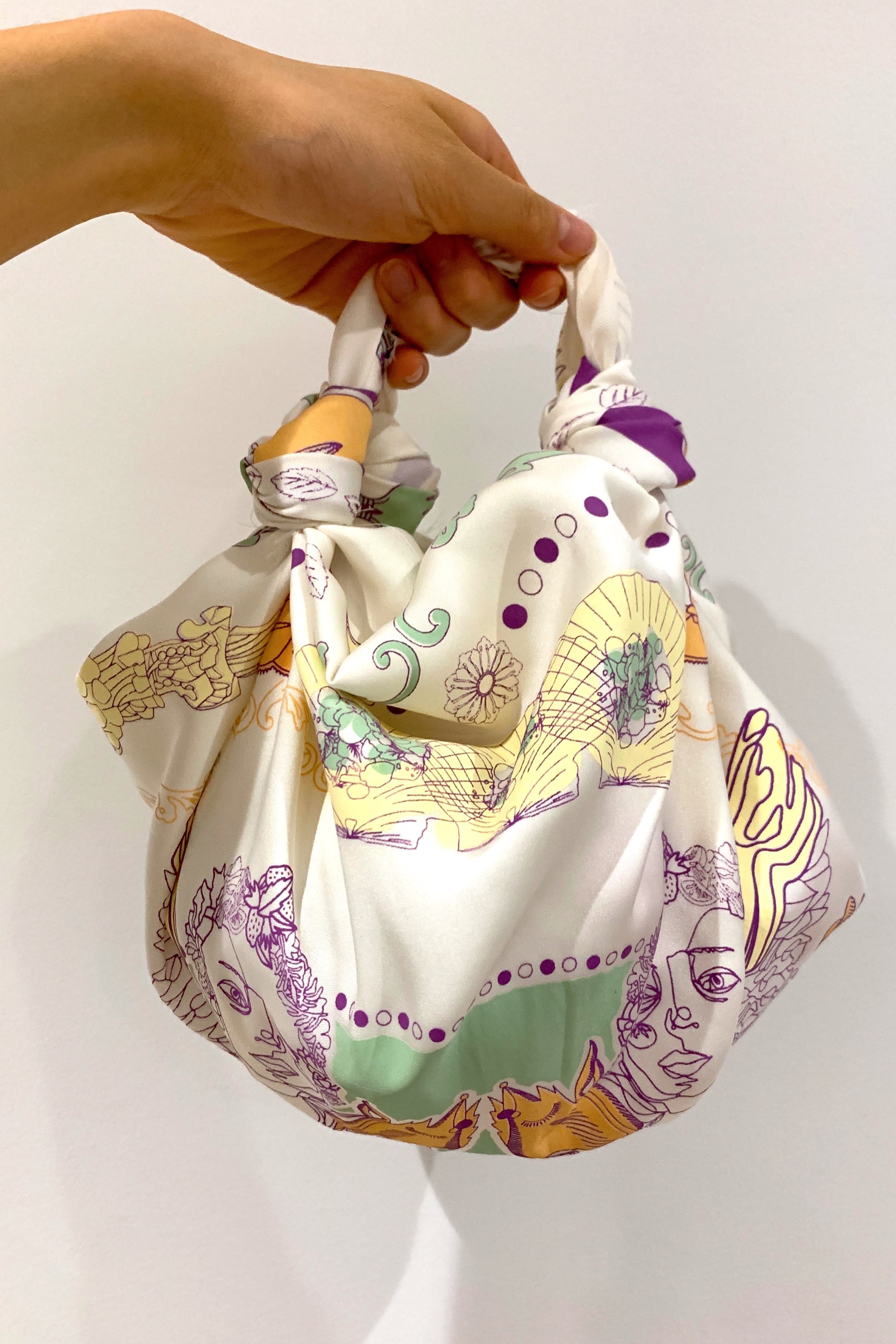
Cultural Cuisines, Christy Shum (BA Textiles) Photo: Christy Shum
-

Cultural Cuisines, Christy Shum. Photo: Christy Shum
Food bring families together but it can also break cultural barriers to create more diversity allowing us to establish new traditions that will be passed on to the next generation. Through this project, I hoped to explore the concept of future heirlooms by reiterating the importance of food in cultural heritage.
In Chinatown I noticed that lots of grocery shoppers were still using plastic bags which cause a lot of harm to the environment, so I decided to create bag and scarf designs that could be used as alternatives to these. Incorporating Swarovski crystals gave my designs a sense of luxury which, I think, would encourage the shopper to make use of the product for longer, thus reducing waste.
Kieu Vu, You Are Not Alone, runner up (weave)
My embroidered and woven collection has a social purpose - it is designed to be curtain fabric for cancer treatment centres and hospitals. The drape of my embroidered fabrics could suggest that they can be used for tapestry too, or as an art piece to be hung on ceilings in scan rooms and treatment areas.
I have created a 'map' of organisations that specialise in helping young cancer patients in every way, whether it is focused on lifestyle, confidence-building, finances or wellbeing. Each crystal's colour represents a different charity and the 3D embroidered 'houses' represent the charity’s buildings or treatment centres soon to be built. Metaphorically they are there to remind everyone that there are others going through similar experiences.
-
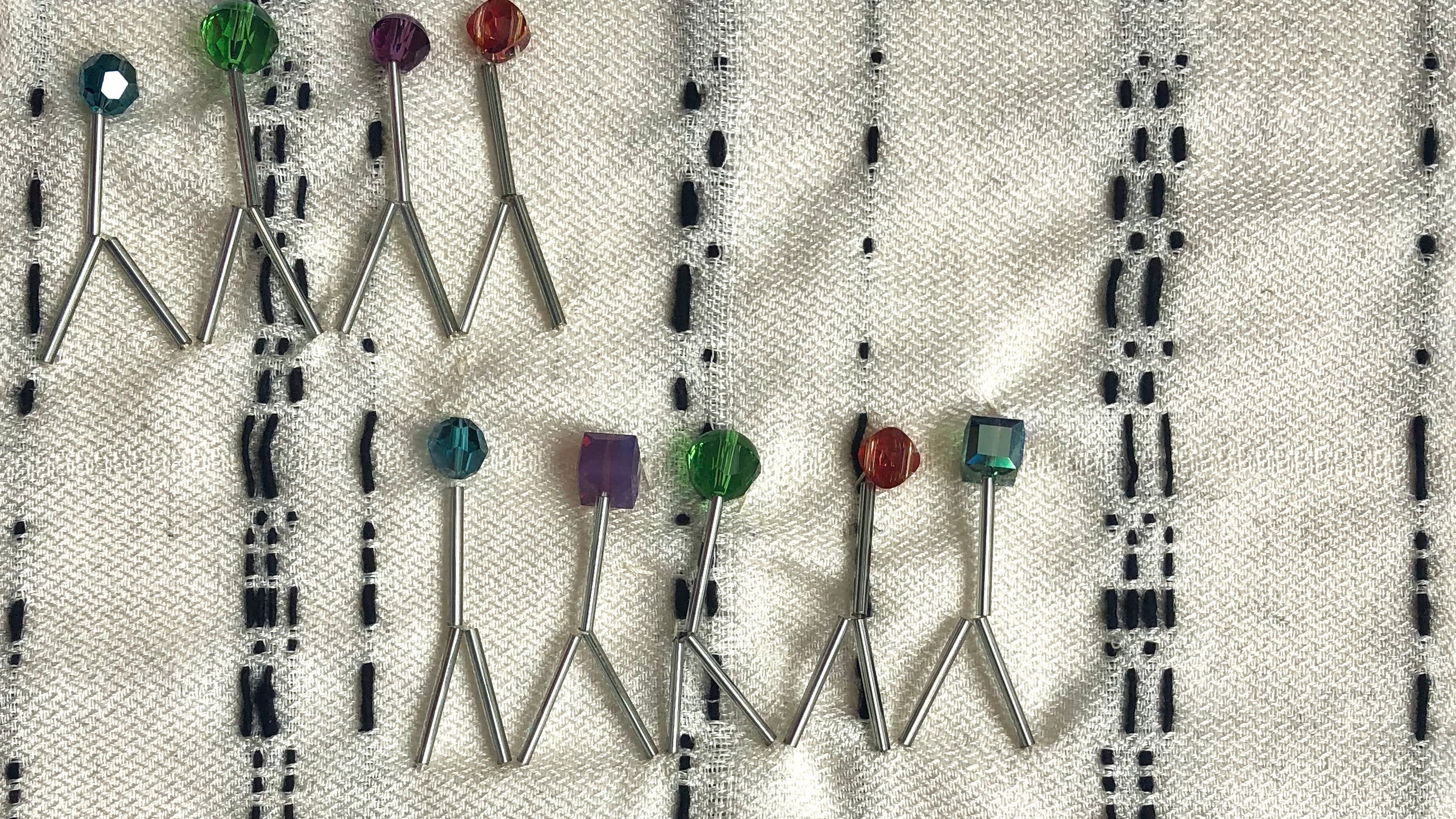
You Are Not Alone, Kieu Vu (BA Textiles) Photo: Kieu vu
-
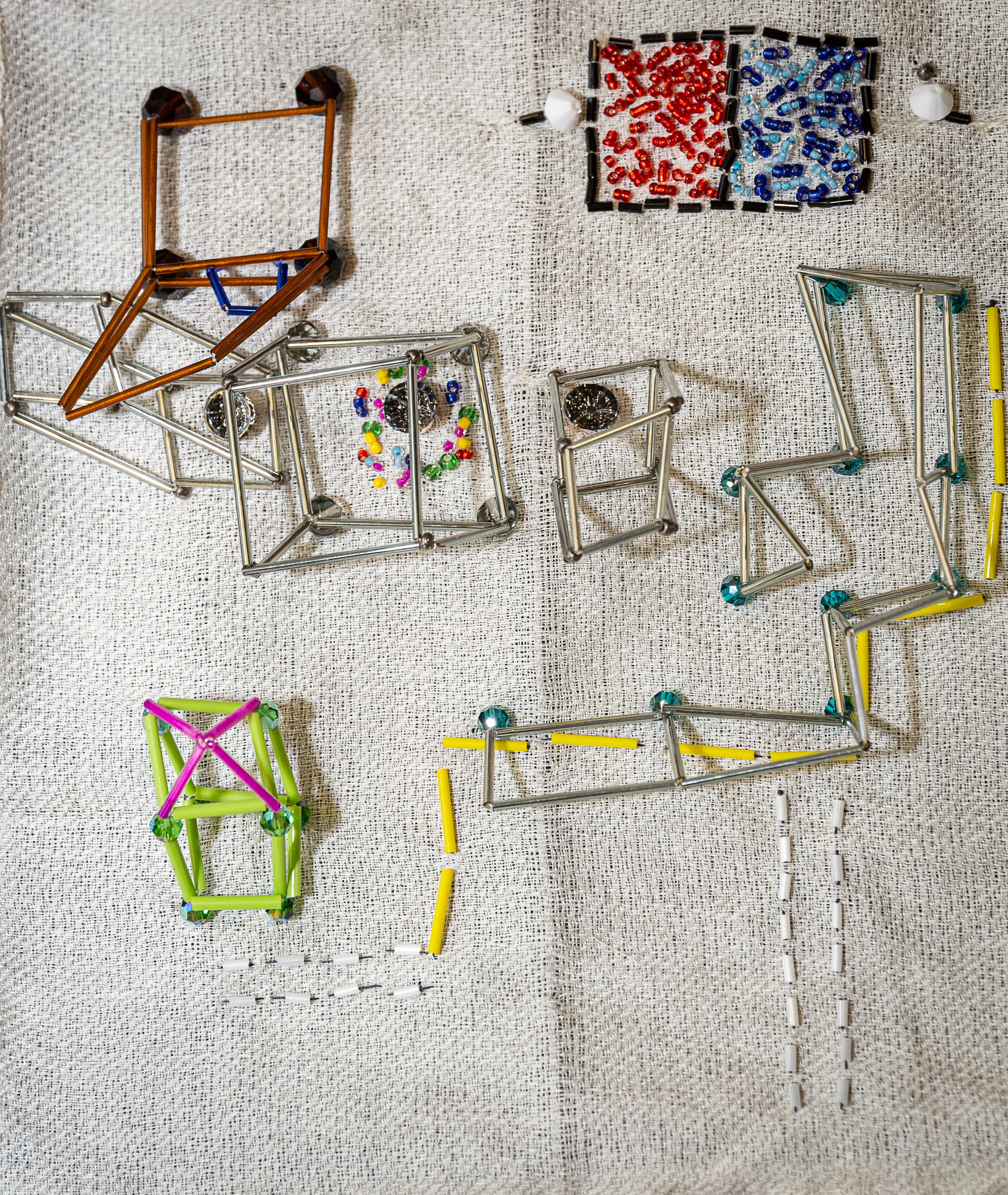
You Are Not Alone, Kieu Vu (BA Textiles) Photo: Bruce Basudde
-
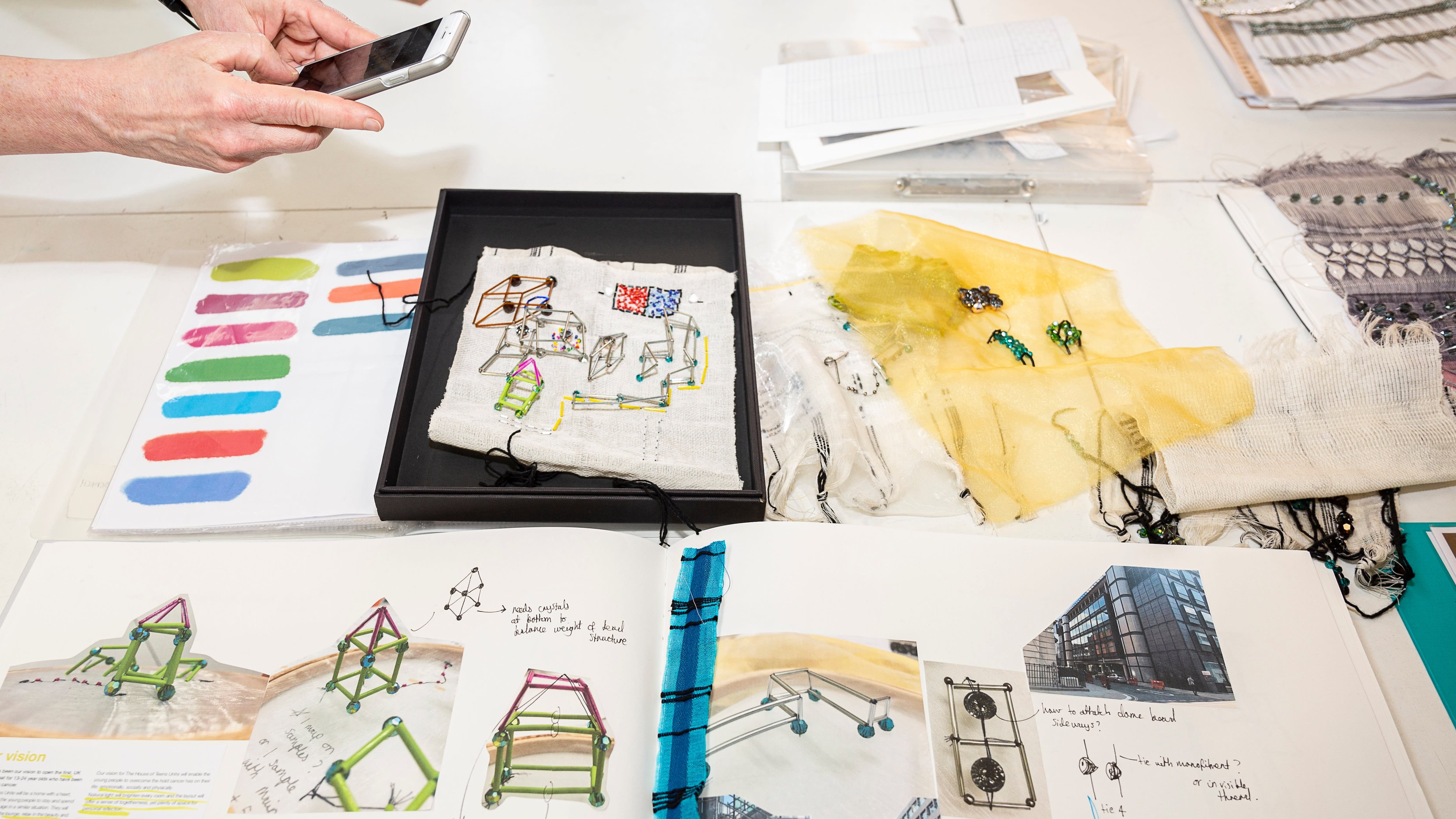
You Are Not Alone, Kieu Vu (BA Textiles) Photo: Bruce Basudde
In my design I considered the possibility of enabling materials to be reused. This is why I chose to work only with beads and without using iron ons - it is very simple to retrieve the crystals after cutting the threads and dismantling the 3D embroidery. I wove mainly with cotton and polyester threads - I want to avoid this in my future work as I am now aware of more sustainable alternatives such as recycled polyester and organic cotton. Linen would be a strong alternative too as the curtain fabric quality will improve after each wash.
Ferenc Zepko, Future Brown, runner up (knit)
I think the future of fashion is in slow fashion. We will buy fewer clothes - they will be better made, we will keep them for longer and we will repair them when they break. Mending and fixing clothes will become very popular because it will enable us to cherish our beloved garments for longer and with repairing we will make them new, exciting and different again. In the future I believe that there will be garment repair shops where artist and designers will give our clothes a customised second life.
For my project I experimented with fixing pieces of knitting with crystals, making old-looking, worn out fabrics appealing. In my project I was intrigued by Daniel Swarovski’s vision to make dream-filled jewels accessible to all people, of all ages, around the world, to inject glamour into women’s lives – to democratise luxury.
-
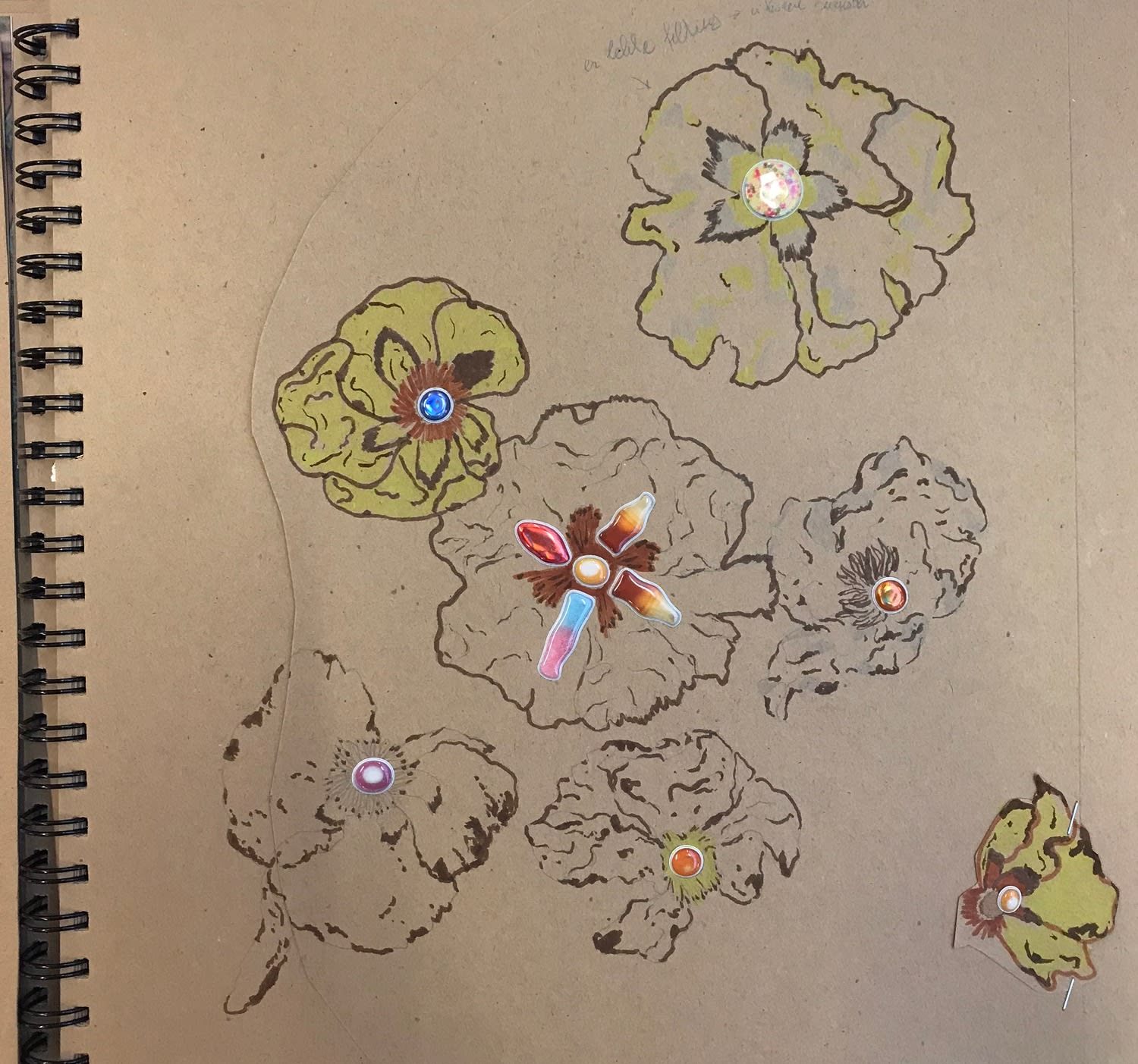
Future Brown, Ferenc Zepko (BA Textiles) Photo: Ferenc Zepko
-
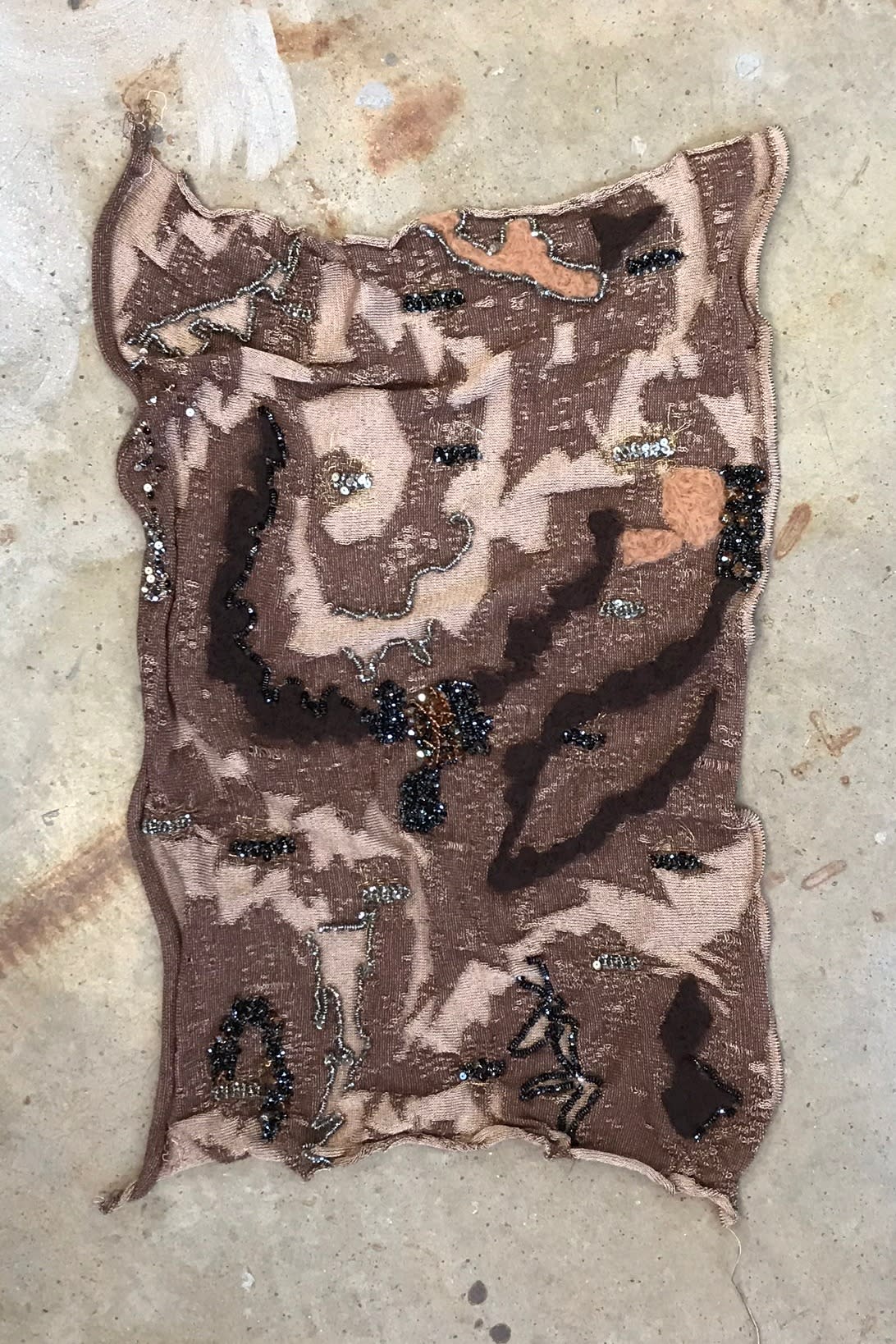
Future Brown, Ferenc Zepko (BA Textiles) Photo: Ferenc Zepko
-
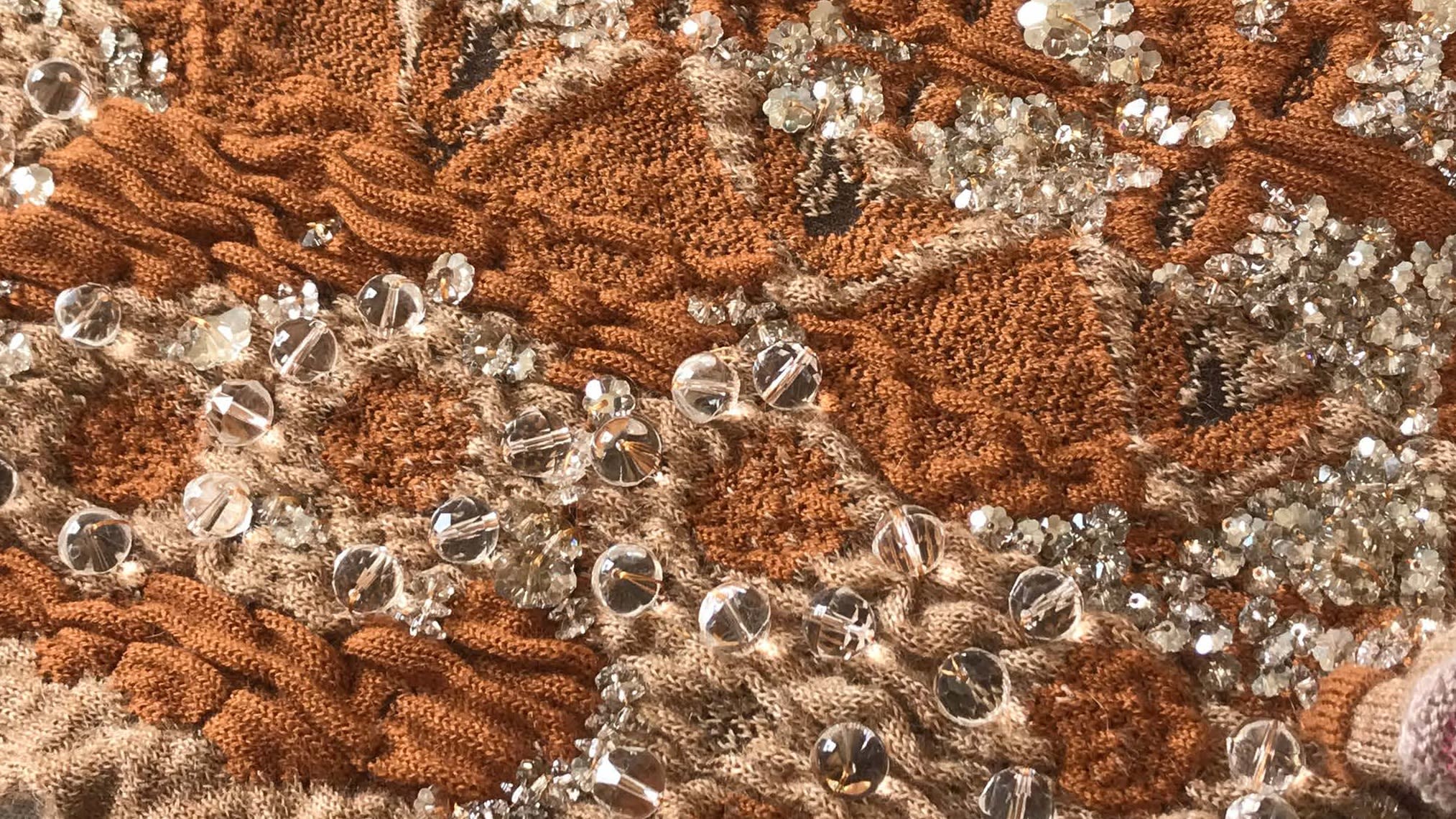
Future Brown, Ferenc Zepko (BA Textiles) Photo: Ferenc Zepko
Discover more
-
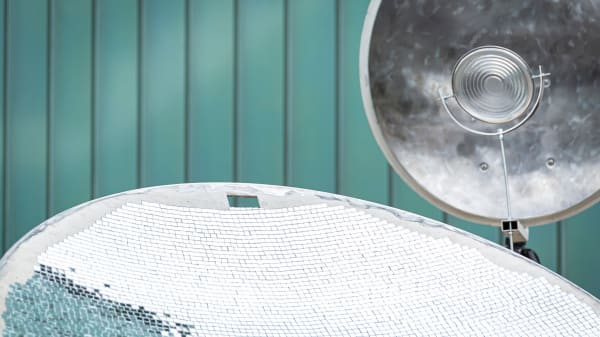
A close up of MA Material Futures student Sean T. Ross' Solar Forge created for the Swarovski Conscious Design project. Image: Bruce Basudde
-

Precious Fish - fabrics created by BA Textile Design student Sissel Gustavsen as part of Central Saint Martins' conscious design partnership with Swarovski
